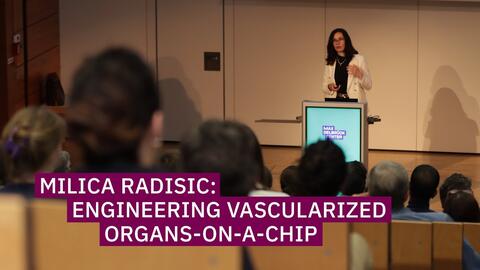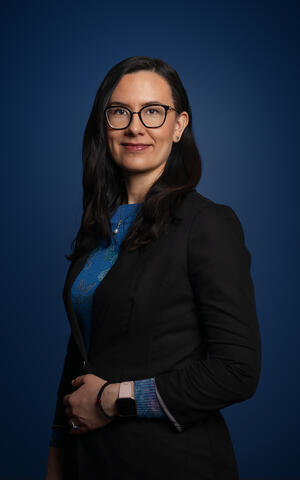Growing vascularized organs on a chip
The Max Delbrück Center is pleased to welcome Professor Milica Radisic from the Institute of Biomedical Engineering at the University of Toronto. Beginning July 1st, Radisic will be setting up her own lab at campus Berlin-Buch. In collaboration with her host, Professor Holger Gerhardt, and other partners from the Berlin Institute of Health at Charité – Universitätsmedizin Berlin, Radisic will spend the next three years studying whether adding specific immune cells to “organ-on-a-chip” technologies, or OoCs, will encourage tissues to grow a stable vascular system. Radisic is among five winners of the Stiftung Charité Visiting Fellows grants who will be supported with up to €600,000 each.
OoCs couple biology with microtechnology to create models of such human tissues as heart, lung, kidney and liver. The silicone chips contain networks of hair-fine microchannels to supply minute volumes of nutrient-laden solution to cells of interest. The cells grow into tissues that can serve as models to study the effects of external factors, such as therapeutics or toxins, on tissues. OoCs can significantly reduce the number of animals required for biomedical research.
A grand challenge
However, because they lack a vasculature, OoCs don’t capture the interaction among the various organs of the body. Consequently, their value as models is limited.
“Vascularization has been a grand challenge,” says Radisic. Researchers have tried different ways to grow vascularized tissues, by adding specific growth factors, or transplanting fragments of blood vessels, for example. But none have yet been able to create tissues with a stable vasculature, she says.
“Our hypothesis is that we need to reestablish the cell circuit by making sure that all the right cells are there,” she explains. It takes more than just a few cardiac cells to build a stable vasculature. “They need their friends.”
Such immune cells as stromal and fibroblast secrete biochemicals and growth factors that encourage blood vessels to grow, for example. Tissues also need macrophages, which clean up debris generated by dying cells.
Like a complex construction project that requires multiple types of expertise beyond just an architect, “it’s all about having a community,” she says. “They enhance each other's work.”
If Radisic and her team are successful, she plans to grow more complex models that can also simulate aspects of the human immune system.
Text: Gunjan Sinha
Radisic gave a lecture titled “Engineering Vascularized Organs-on-a-Chip” about her tissue-engineering work on July 1st.








